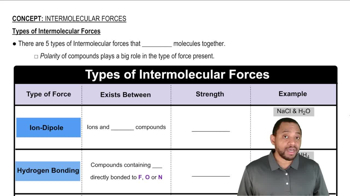Here are the essential concepts you must grasp in order to answer the question correctly.
Kinetic Energy and Temperature
Kinetic energy is the energy of motion, and in the context of atoms, it relates to their temperature. As a substance heats up, the average kinetic energy of its atoms increases, leading to more vigorous motion. This is crucial for understanding phase changes, such as melting, where the temperature rises until the solid structure breaks down.
Recommended video:
Phase Changes
Phase changes refer to the transitions between solid, liquid, and gas states of matter. During melting, a solid absorbs heat, causing its atoms to gain kinetic energy and move apart, transitioning into a liquid state. This process illustrates how energy input affects the arrangement and behavior of atoms in different phases.
Recommended video:
Interatomic Forces
Interatomic forces are the attractive and repulsive forces between atoms that determine the structure and stability of a material. In solids, these forces keep atoms closely packed. As a metal like lead melts, these forces weaken, allowing atoms to move further apart, which increases the average distance between them and facilitates the transition to a liquid state.
Recommended video:
Types of Intermolecular Forces
 Verified step by step guidance
Verified step by step guidance

